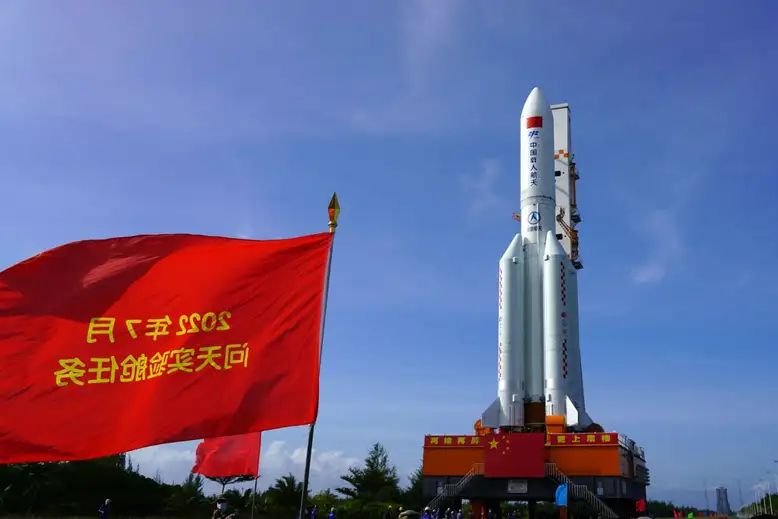
The Long March-5B rocket at the Wenchang launch site in China
By Alex Wilkins,
Published by New Scientist, 4 November 2022
On Monday, China launched its Long March-5B rocket to carry the final module to the Tiangong space station – now it has fallen back to Earth, but no one yet knows where it has hit
A Chinese rocket used to build its space station has crashed back to Earth. It reentered the atmosphere at 10.01 UTC – but at least some of it is expected to have survived to hit the surface and no one yet knows where it came down.
On Monday, China launched its Long March-5B rocket to carry the final module to its Tiangong space station, which is now complete. The rocket’s core booster, which weighs 22 tonnes and is 16 metres long, has spent the past week drifting back towards Earth.
But at least some of this part of the rocket has a chance of making it to the ground. The initial predictions for where this might happen – before it had reentered the atmosphere – covered a region containing 88 per cent of the world’s population, according to the Aerospace Corporation (AC), a US non-profit group that produces technical guidance for the aerospace industry.
The booster’s rapid speed of almost 30,000 kilometres per hour means that its exact time of reentry affects where it will come down, with a few seconds changing where it will hit by tens of kilometres. An impact location hasn’t yet been calculated.
#USSPACECOM can confirm the People’s Republic of China Long March 5B #CZ5B rocket re-entered the atmosphere over the south-central Pacific Ocean at 4:01am MDT/10:01 UTC on 11/4. For details on the uncontrolled reentry’s impact location, we once again refer you to the #PRC.
— U.S. Space Command (@US_SpaceCom) November 4, 2022
A Chinese foreign ministry spokesperson told The New York Times that the probability of causing harm to aviation activities or people on the ground was low, and that “China has always carried out activities in the peaceful use of outer space in accordance with international law and international practice – re-entry of the last stage of a rocket is an international practice”.
See: Original Article




